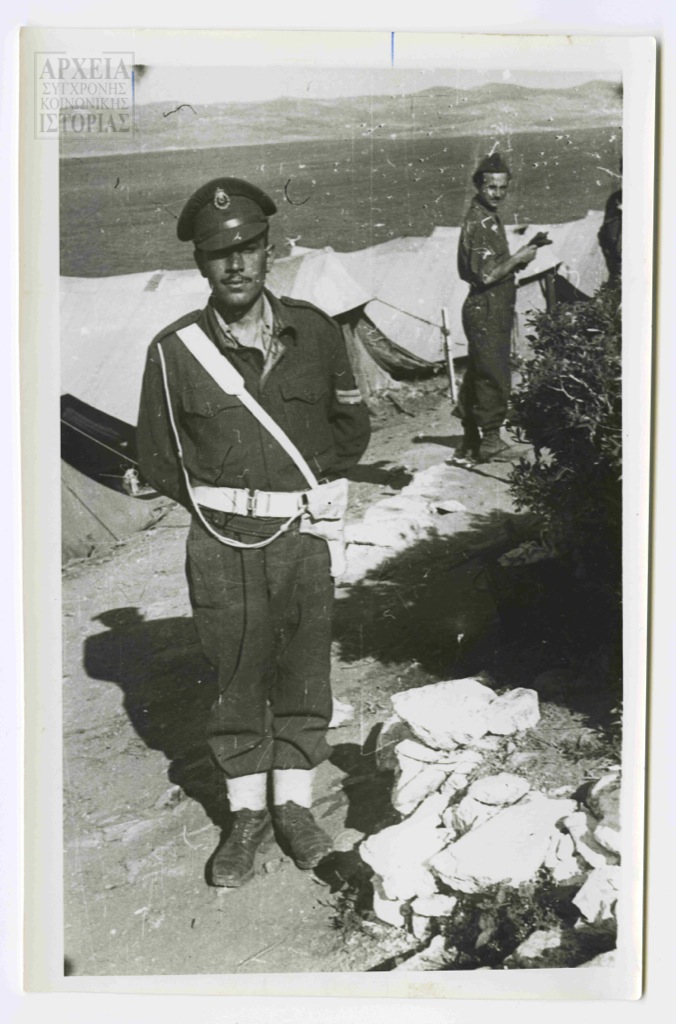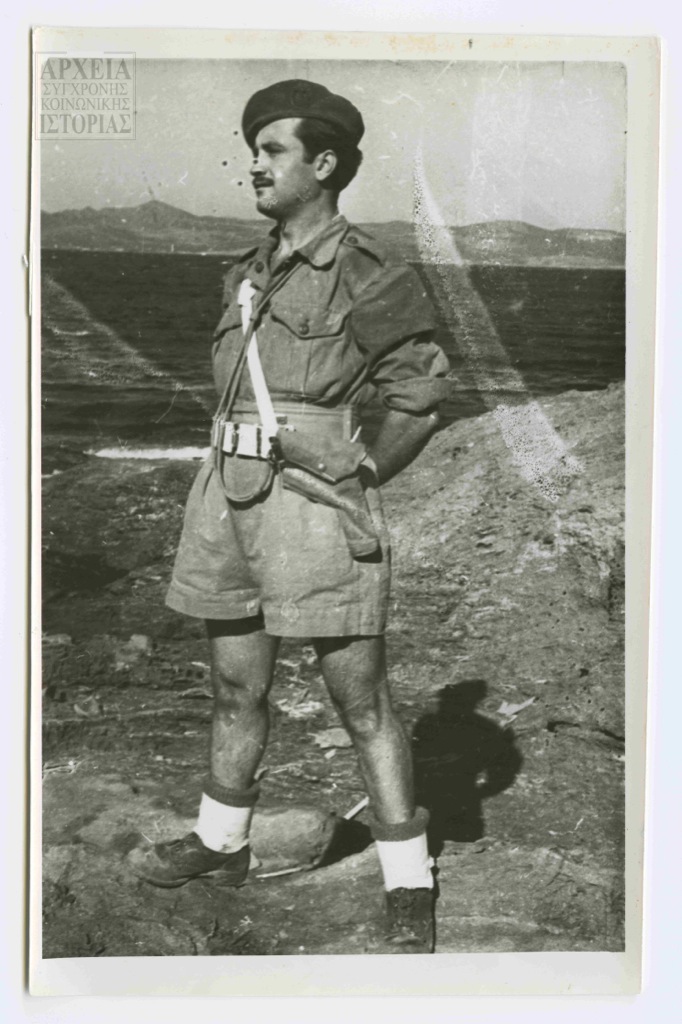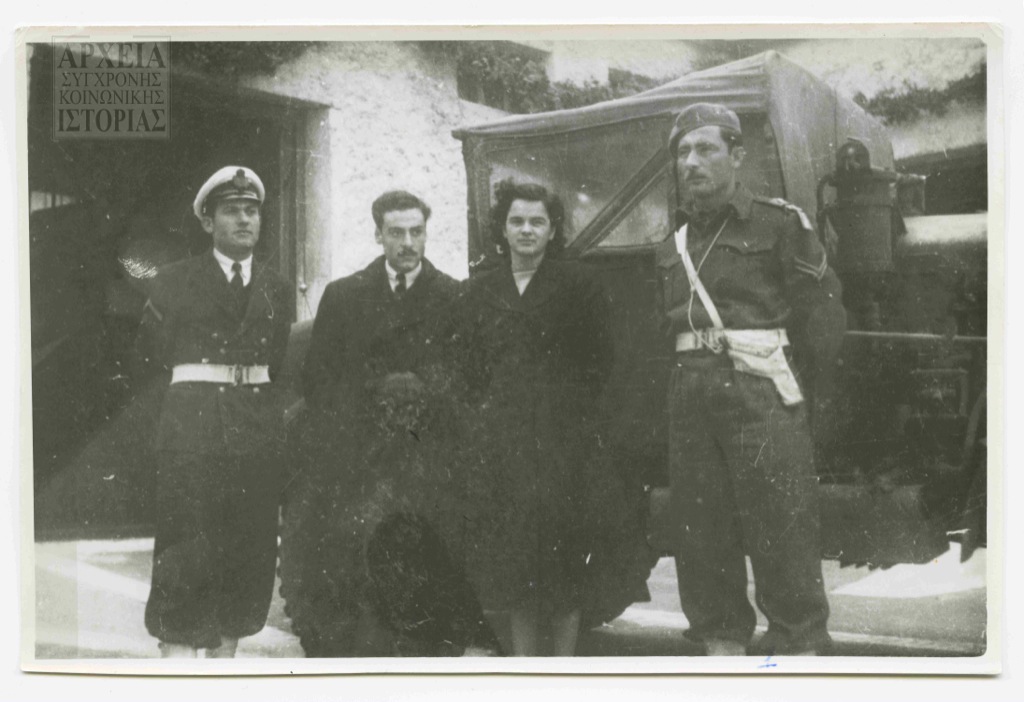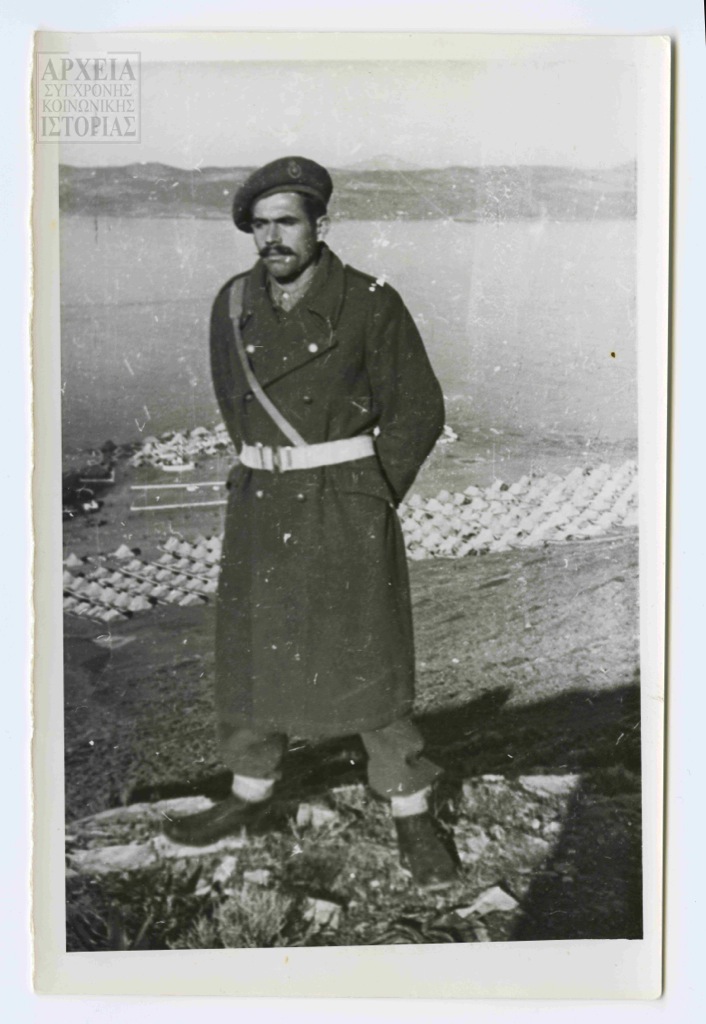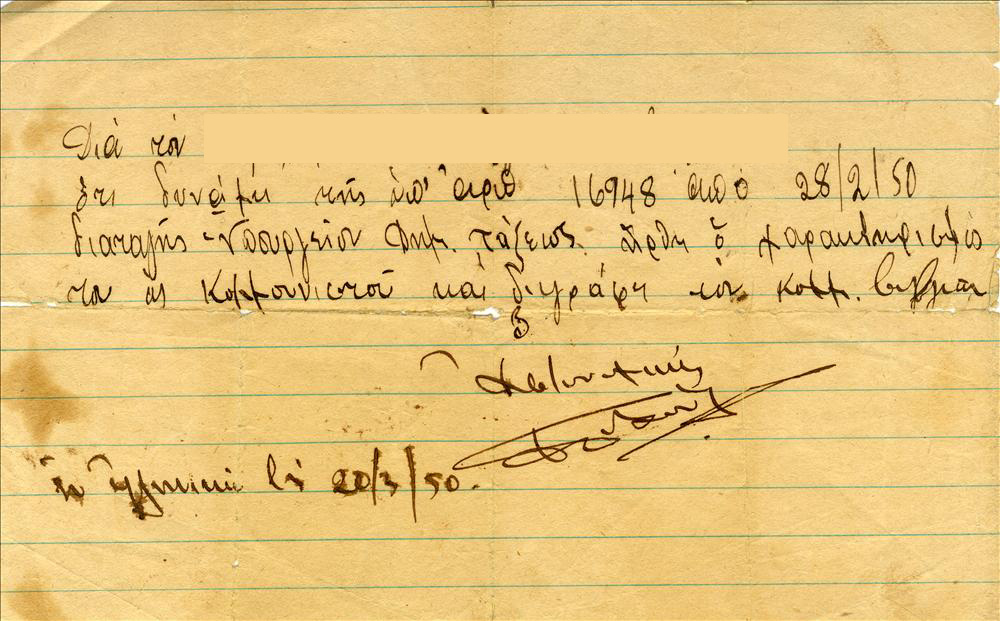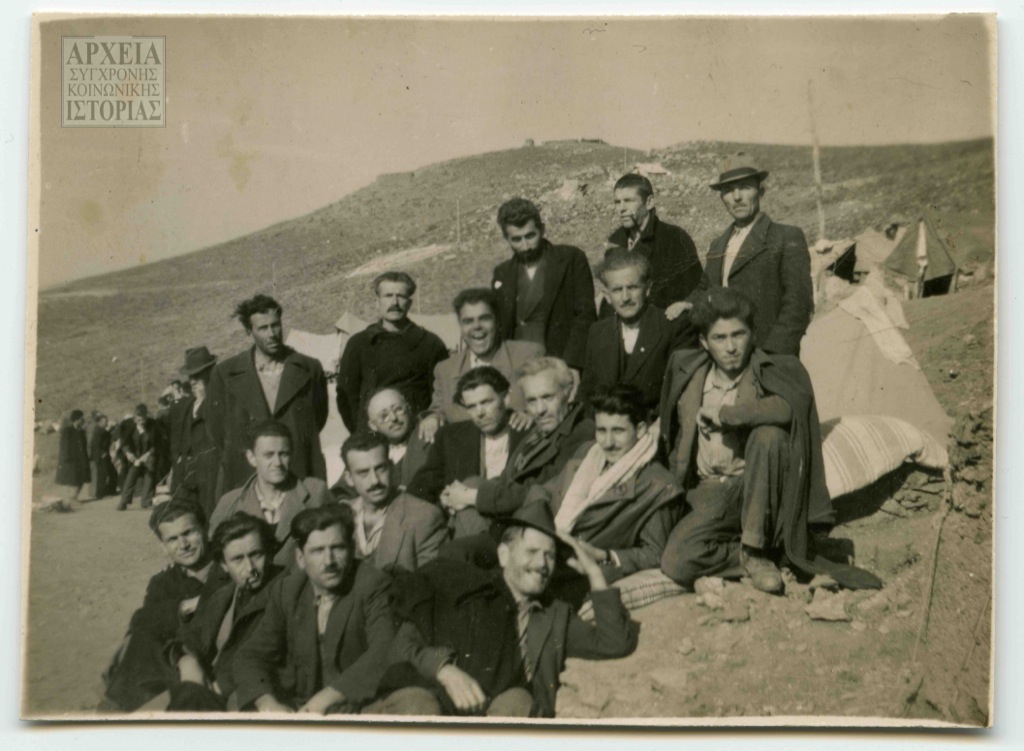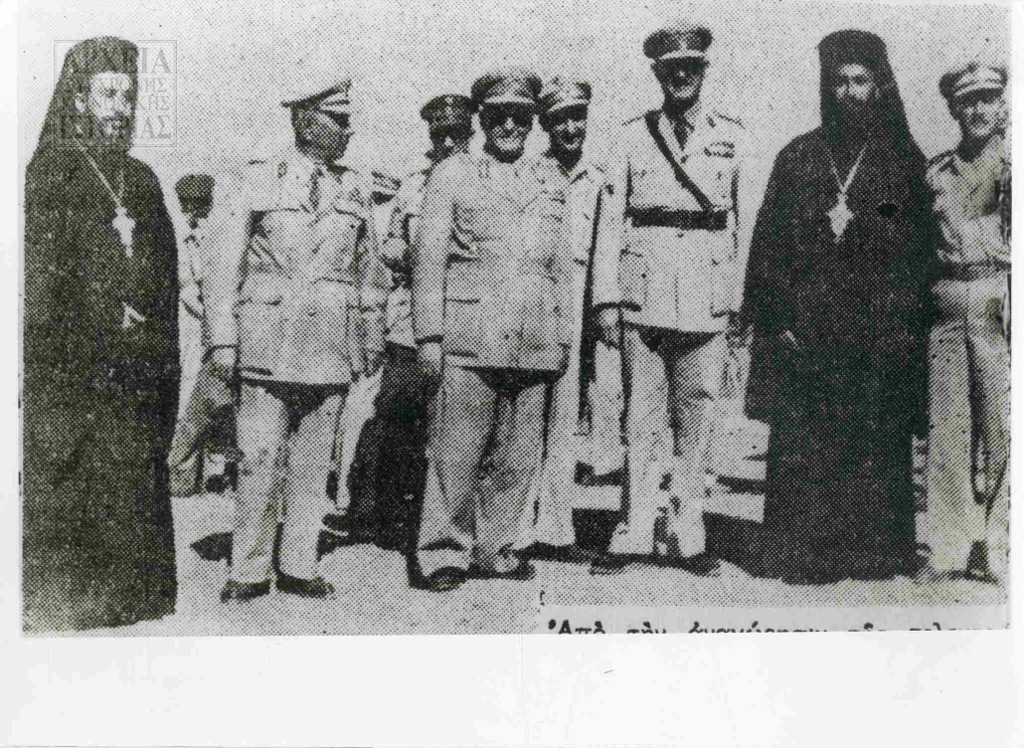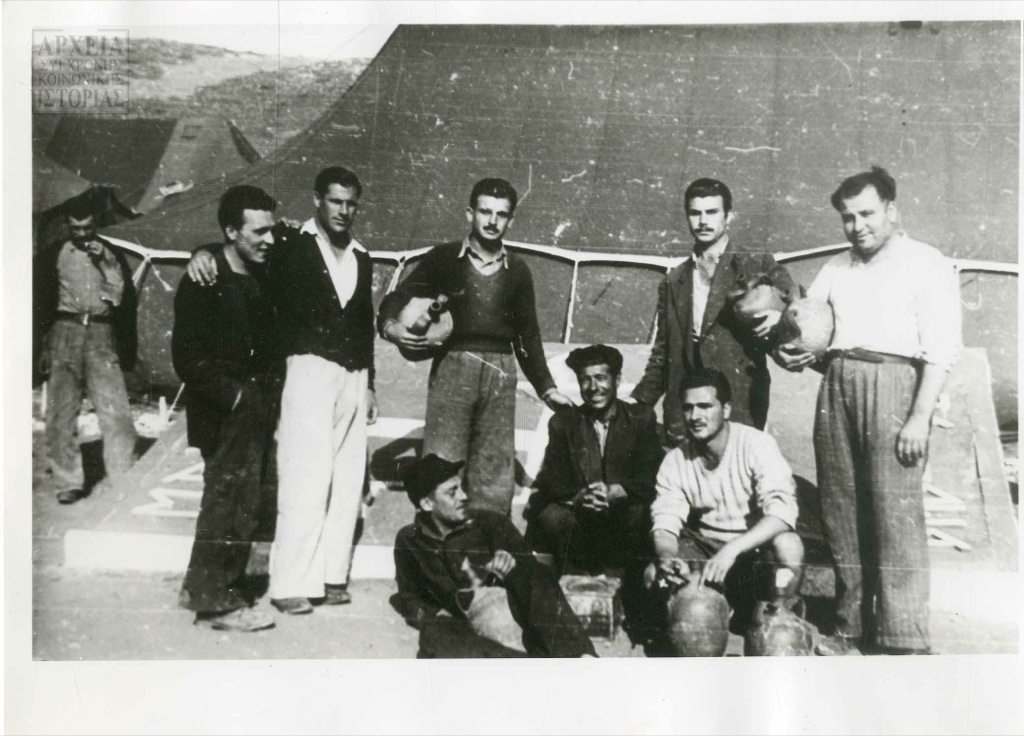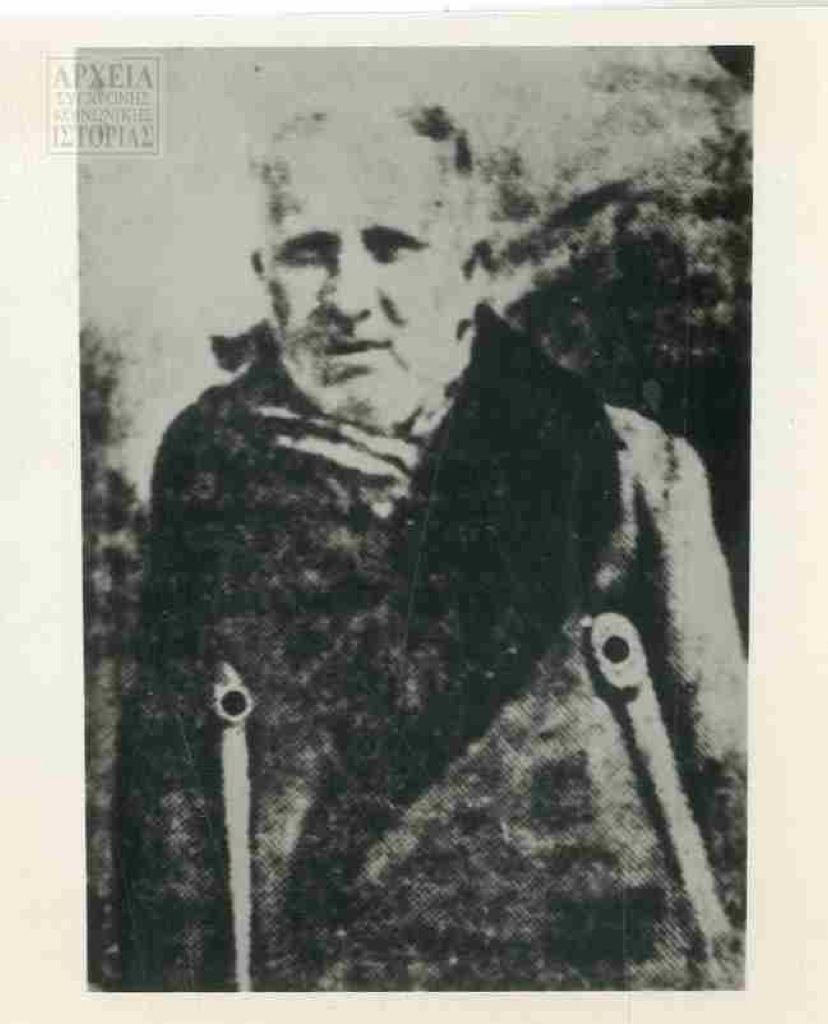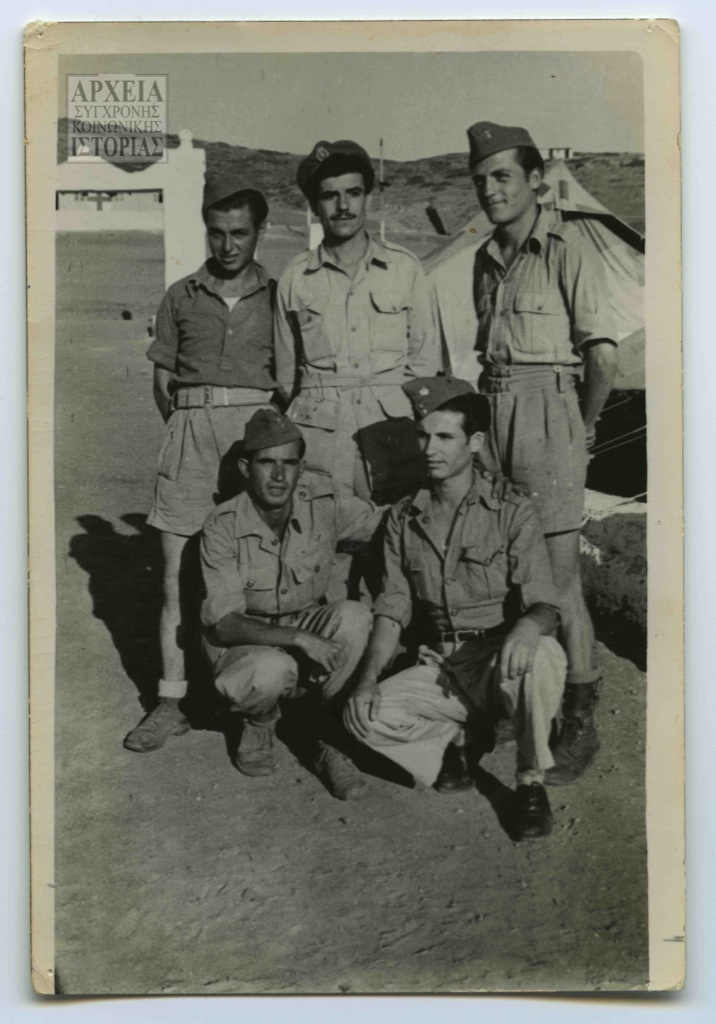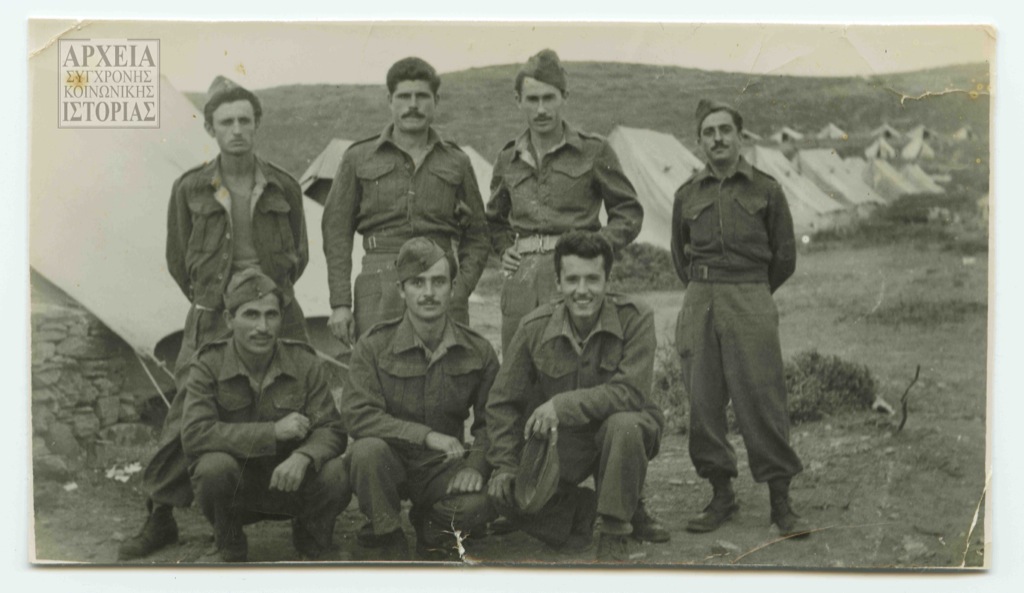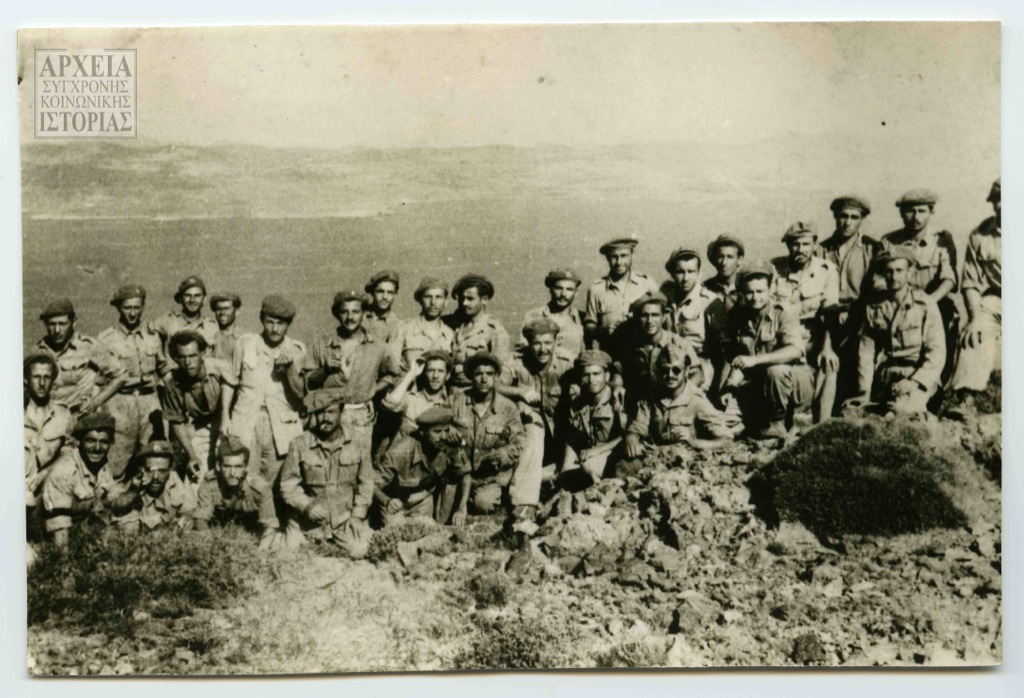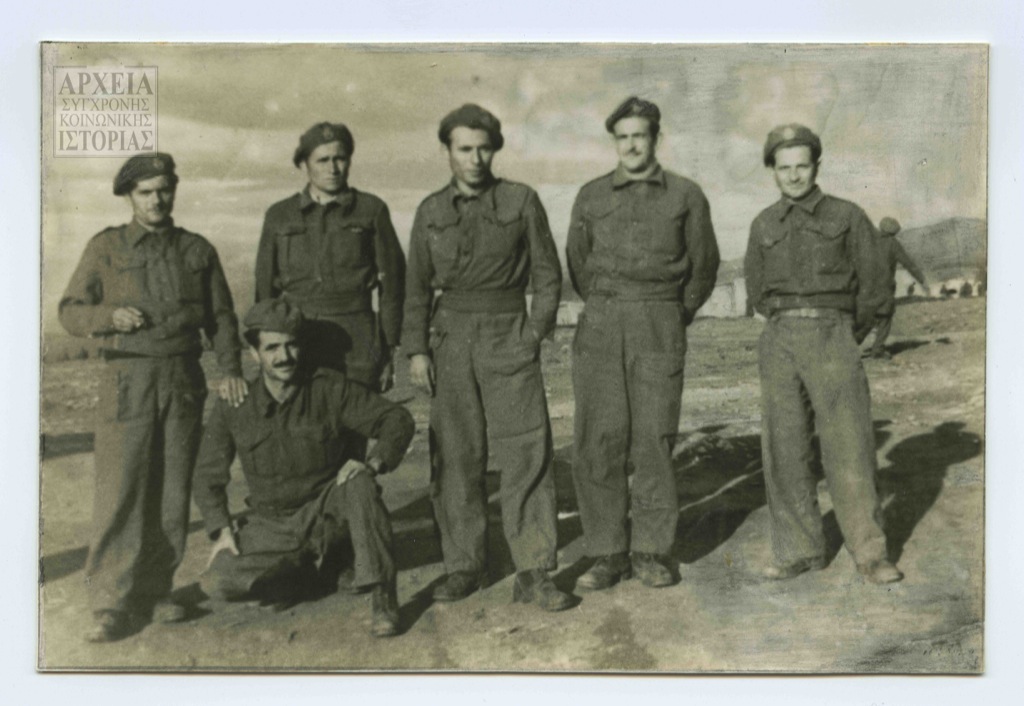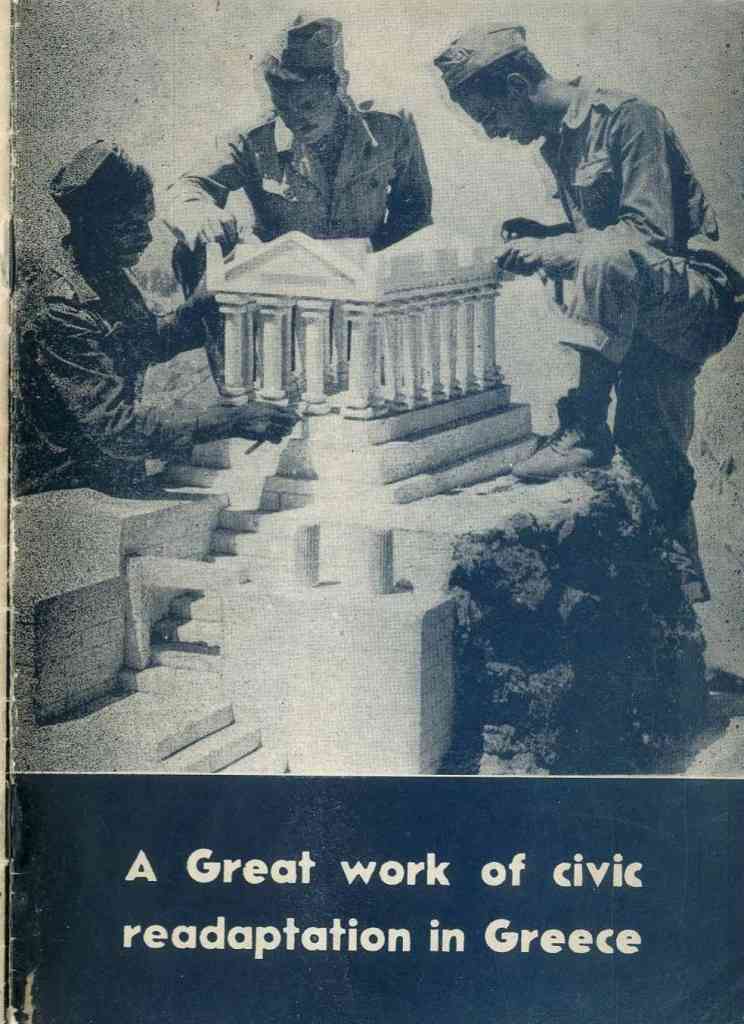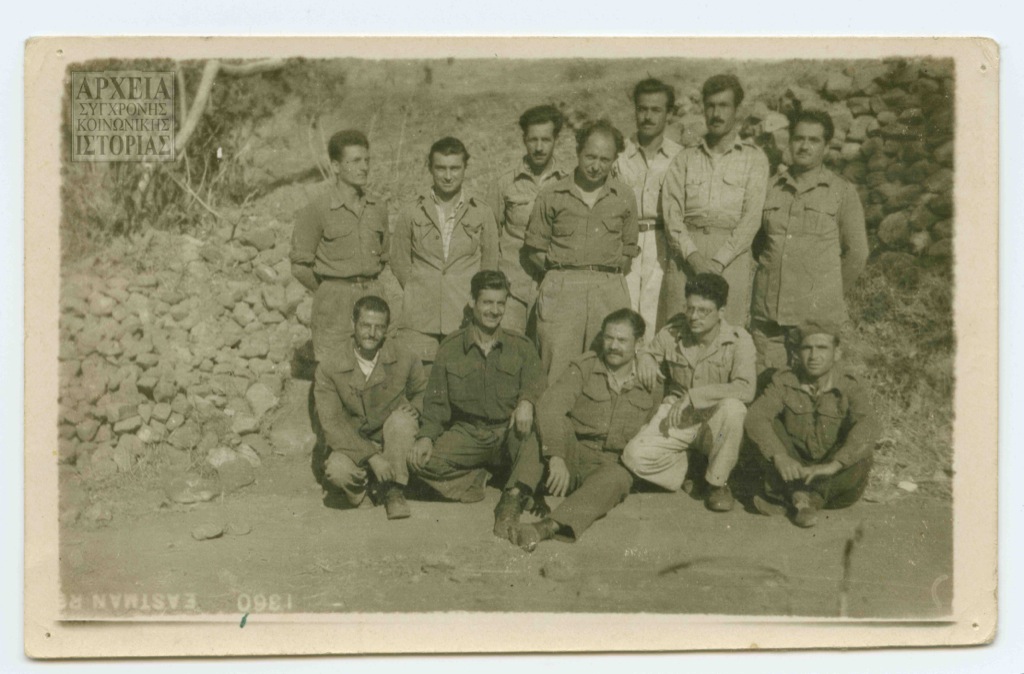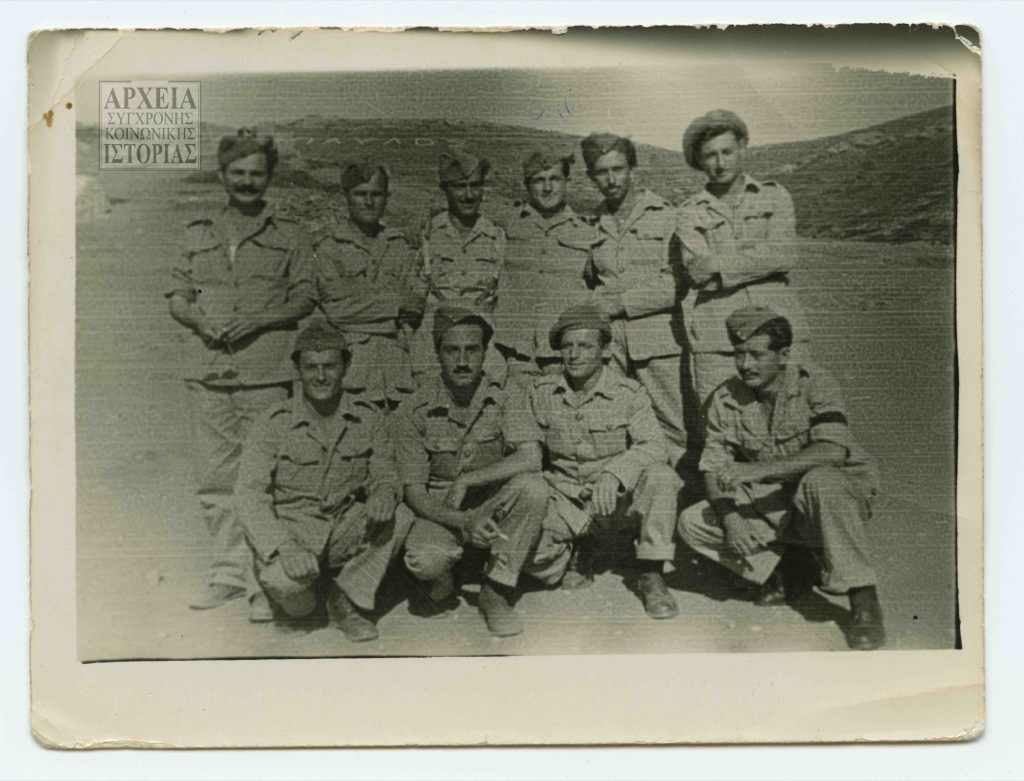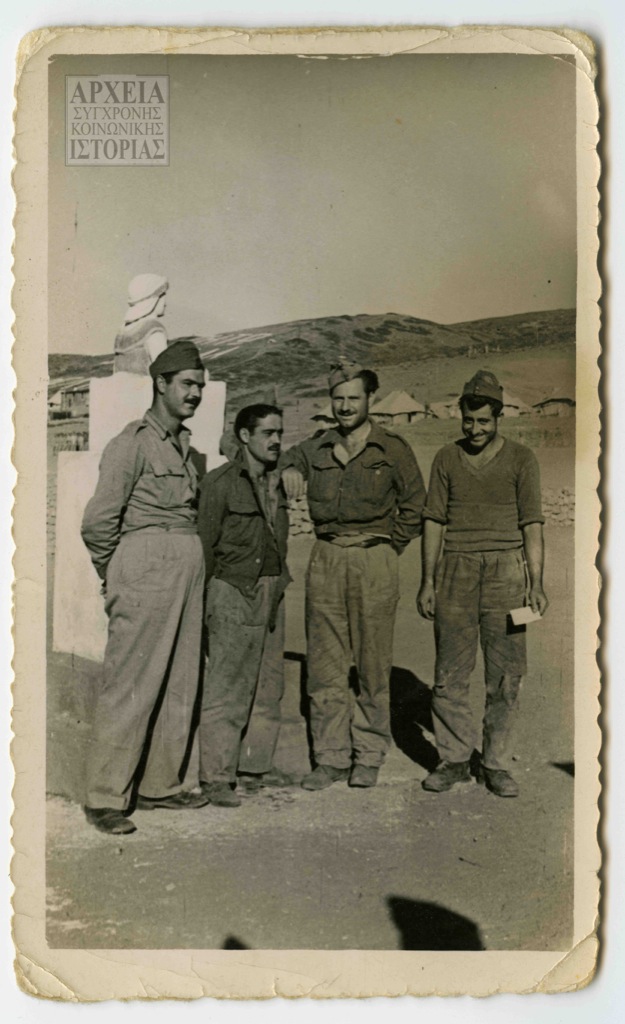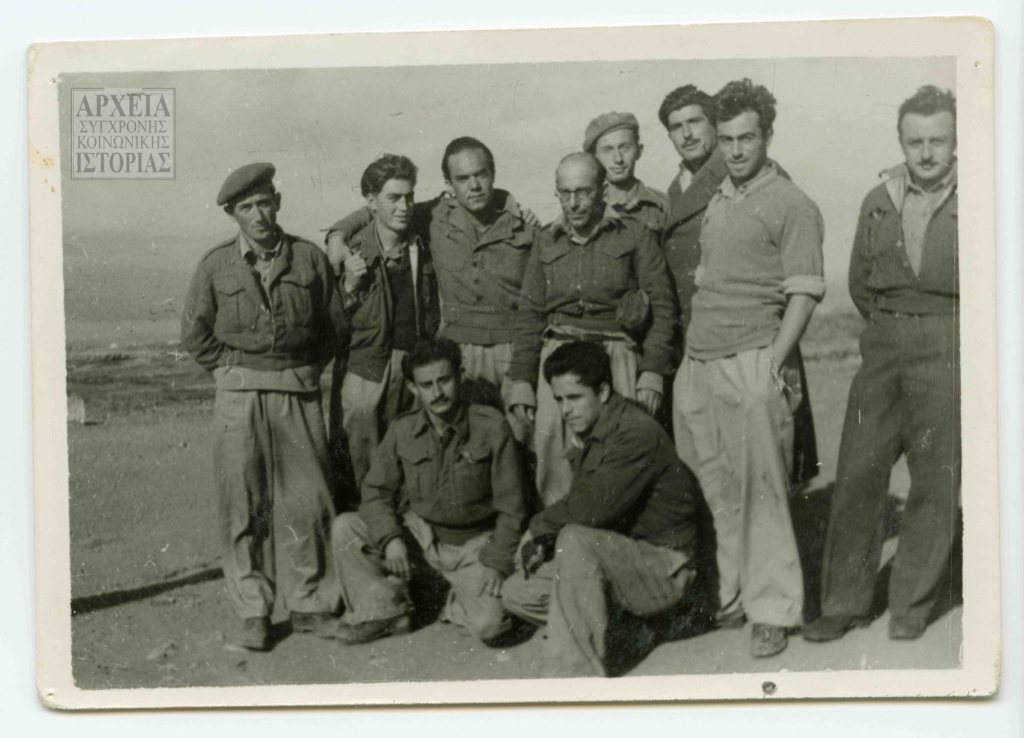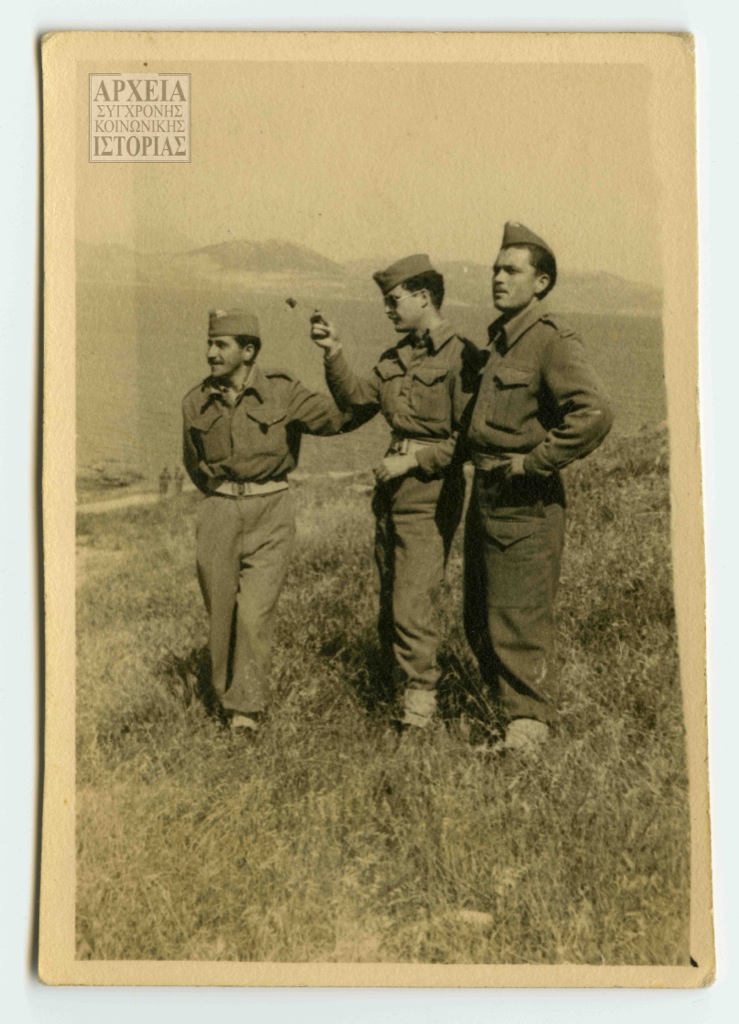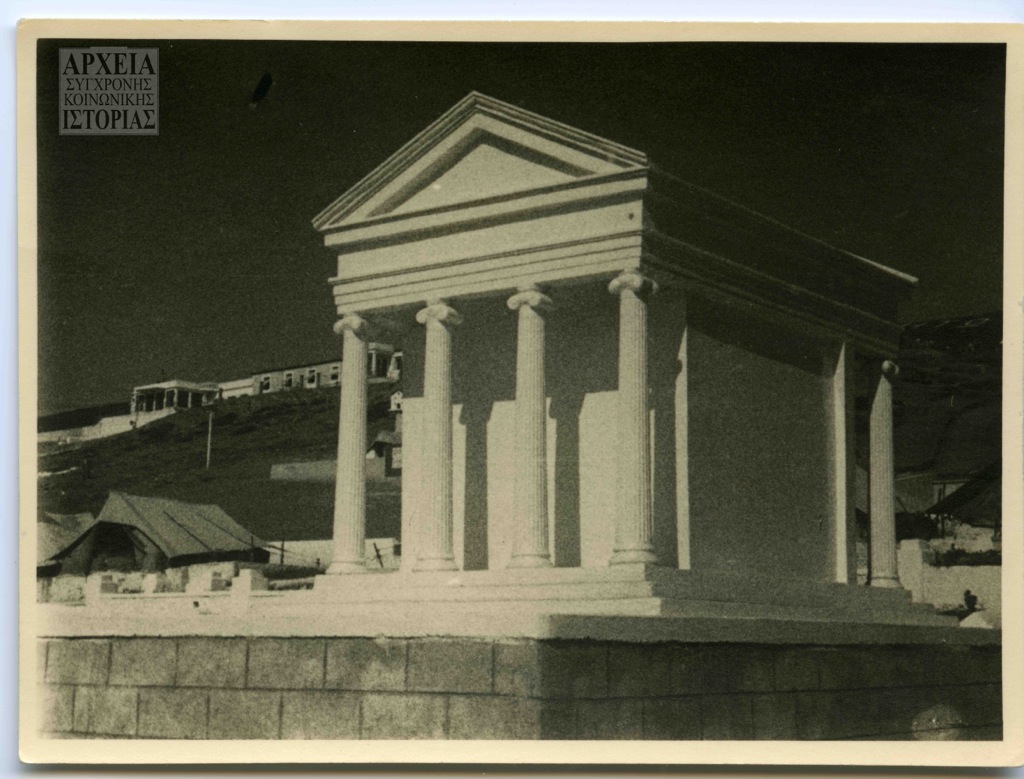1947-1950
Άποψη του Β΄ Τάγματος Σκαπανέων, 1948The military camps on Makronissos were established by the National Army to “cleanse suspect” soldiers and officers from the ranks and thus to safeguard the combat-readiness of the troops deployed against the Democratic Army of GreeceDemocratic Army of Greece (DSE)The combat arm of the Communist Party of Greece (KKE), it operated from 1946 to 1949. (DSE). Based on information provided by local police authorities, the army deemed anyone on the left or who had participated in the National Liberation Front (EAM) resistanceNational Liberation Front (EAM)Broad-based resistance organisation comprising the core of the wartime resistance against the Axis occupiers. From its founding in September 1941, it included organisations, movements and political figures spanning the political centre to the communist left. as “suspect” and, from the summer of 1946, assigned them to special battalions.The soldiers of the First Battalion were first gathered at LiopesiLiopesi (Peania), AtticaLocation of the First Sappers Battalion camp for a short period. in Attica and later transferred to Agios Nikolaos in CreteAgios Nikolaos, CreteLocation of the First Sappers Battalion camp before the unit’s final transfer to Makronissos in 1947. and, from there, to the island of GiarosGiarosIsland in the central Aegean that was used as a place of internal exile before a large prison compound was built there. Site of the Second Sappers Battalion camp before the unit was transferred to Makronissos in 1947.. The Second Battalion’s troops were initially amassed at LarissaLarissaInitial assembly location for troops assigned to the Second Sappers Battalion., and the battalion’s base was subsequently transferred to Rethymno on Crete, then Liopesi, and finally to Porto RaftiPorto Rafti, AtticaAssembly site for soldiers assigned to the Second Sappers Battalion., also in Attica. The troops of the Third Battalion were first assembled at MikraMikra, ThessalonikiInitial assembly site for troops assigned to the Third Sappers Battalion. and later transferred to DudularDudular (Diavata), ThessalonikiInitial base site of the Third Sappers Battalion. (Diavata), both in Thessaloniki.The Second Battalion was the first to arrive on Makronissos, on 28 May 1947, followed by the other two battalions over the next two months. Makronissos’ history can, broadly, be divided into three periods.• The first spans its founding through spring 1949, when soldiers and officers were the main focus of the violent “rehabilitation”“Rehabilitation”The term used to describe Makronissos activities targeting troops and civilians. Essentially, the term bore no relation to reality as there was no “national” or “moral rehabilitation” of detainees on Makronissos. Rather, terror was used with the aim of altering detainees’ political ideas. process.• The second extends from spring 1949 to summer 1950, a period during which the number of civilian detainees at Makronissos grew (due to preventive arrests, male and female political exiles).• The third period runs from summer 1950 until the closure of the military complex, when the only active facilities were Athens Military Prison (SFA)Athens Military Prison (SFA)Facility used for the detention of soldiers and officers facing charges stemming from political and criminal infractions. and a detention area for “suspect” soldiers – albeit with comparatively better conditions.Makronissos is a compound of encampments and detention facilities that includes:• the three Sapper Battalion camps, which in spring 1949 were renamed Special Conscript Battalions (respectively, A ETOFirst Sappers Battalion (First Special Privates Battalion, A ETO)Military unit created in the First Army Corps after a decision was taken not to remove citizens with “suspect political beliefs” from the army’s ranks but instead to assign them to units comprised of “undesirables”. From the outset, the First Battalion consisted of soldiers who refused to sign a repentance declaration upon arrival at Makronissos. Over time, many of those persisting in their refusal landed in this battalion, which became known as the “red battalion” or the “Democratic Army of Makronissos”. Conditions changed after the massacre of 29 February–1 March 1948. After its operation at Makronissos, the unit was renamed the First Special Privates Battalion (A ETO)., B ETOSecond Sappers Battalion (Second Special Privates Battalion, B ETO)Military unit created in the Second Army Corps after a decision was taken not to remove citizens with “suspect political beliefs” from the army’s ranks but instead to assign them to units comprised of “undesirables”. It was the first such battalion to arrive and set up camp on Makronissos. Throughout its operation, it was the reception unit for newly arrived troops pending their transfer to the other two battalions. Subsequent to its stationing at Makronissos, it was renamed the Second Special Privates Battalion (B ETO). and C ETOThird Sappers Battalion (Third Special Privates Battalion, C ETO)Military unit created in the Third Army Corps after a decision was taken not to remove citizens with “suspect political beliefs” from the army’s ranks but instead to assign them to units comprised of “undesirables”. Under the command of Captain Panagiotis Skaloumbakas, it was the harshest and most brutal unit at Makronissos. Because such a large number of soldiers serving in the unit signed repentance declarations, it was dubbed the “blue battalion” and “the pool of Siloam”. Subsequent to its stationing at Makronissos, it was renamed the Third Special Privates Battalion (C ETO).). Άποψη του Α΄ Τάγματος Σκαπανέων, τέλη 1947• Special Civilian Rehabilitation Schools (ESAI) for civilian exiles, which were established in the first two Special Conscript Battalion camps. The A ETO-ESAIFirst Special Civilian Rehabilitation School (A ETO-ESAI)Military camp for political exiles that was administered by the A ETO. It was set up after the end of the Greek Civil War in October 1949, along with the Organisation of Makronissos Rehabilitation Centres (OAM), through which the army officially assumed the “political reform” of civilians. was created in March 1949 and B ETO-ESAISecond Special Civilian Rehabilitation School (B ETO-ESAI)Military camp for political exiles that was administered by the B ETO. It was created after the end of the Greek Civil War in October 1949, along with the Organisation of Makronissos Rehabilitation Centres (OAM), through which the army officially assumed the “political reform” of civilians. in November 1949.• the disciplinary campsDisciplinary CampMilitary camp for political exiles overseen and administered by the gendarmerie. It was initially used for “preemptively detained” individuals from army operations in the northern Peloponnese over Christmas 1948. It was located north of the First Battalion at a site known as Trisanemi. for political exiles that were established in November 1948 in the island’s northern section and guarded by the Fourth Gendarmerie Battalion; political exiles were later absorbed by the Special Civilian Rehabilitation Schools.• Athens Military Prison (SFA)Athens Military Prison (SFA)Facility used for the detention of soldiers and officers facing charges stemming from political and criminal infractions., since August 1947, for convicted soldiers or defendants previously held in the Military Prison on Leoforos Vouliagmenis (a main thoroughfare leading south from Athens).• the Special Women’s Rehabilitation School (ESAG)Special Women’s Rehabilitation School (ESAG)Military camp for female political exiles that was under the administration of the A ETO. The ESAG was created within the operational framework of the Organisation of Makronissos Rehabilitation Centres (OAM) and received female political detainees from Trikeri in January 1950., which was created for women political exiles in January 1950 at the A ETO. Μπαϊρακτάρης και ΕξαρχάκοςMakronissos was under the jurisdiction of the Army General Staff’s Bureau B XI. In spring 1950, the camp was under the command of Brigadier Georgios BairaktarisBairaktaris GeorgiosColonel in the artillery and commander of the Army General Staff’s Directorate BXII who set up the military camps at Makronissos. He oversaw the detainees’ and exiles’ “rehabilitation” and, according to some sources, monitored the massacre of the First Battalion in 1948 from the deck of a navy vessel. ., with Major Antonis VassilopouloVassilopoulos AntonisCommander of the First Battalion during the 1948 massacre. He was accused with financial misconduct before assuming the battalion’s command. He was also accused of misconduct during his command of the First Battalion. He was transferred from his position after Vrasidas Papagiannopoulos became head of the Organisation of Makronissos Rehabilitation Centres (OAM) under the Plastiras government.s, Major Ilias Toliopoulos and Lieutenant-Colonel Spyros HimariotisHeimariotis SpyrosLieutenant colonel, commander of Makronissos military camp. serving under him as the commanders of the First, Second and Third Battalions, respectively. The infamous Colonel Thomas SoulisSoulis ThomasCommander of the military prisons at Makronissos for minors. The administration’s brutality pushed many of the detainees to suicide and Soulis himself was accused of unethical behaviour towards them. was the SFA’s commander.The number and composition of the prisoner population at Makronissos changed over the course of the Greek Civil War. In summer 1947, the number of detainee troops and officers was almost 10,000; in May 1948, there were 15,814 soldiers and officers as well as 728 political prisoners and exiles on the island; in August 1949, there were 7,500 soldiers and 20,000 civilians, while that December, the prisoner population was 5,521 soldiers and 11,247 political exiles. In total, according to the Army General Staff, some 25,000 soldiers and officers had been “rehabilitated” by October 1949. Many of those “rehabilitated” troops were deployed in Greek Army combat units against the Democratic Army of Greece during the civil war.Although Makronissos’ army camps had been in operation since 1947, the law governing the running of the camps was not passed until after the mass transfer there of political exiles. More specifically, Resolution 73Resolution 73 “On National Rehabilitation Measures”Resolution adopted by Parliament in October 1949 establishing the Organisation of Makronissos Rehabilitation Centres (OAM), which was tasked with the “national rehabilitation” of civilian exiles on the island. of 14 October 1949 on “National Rehabilitation Measures” established the Organisation of Makronissos Rehabilitation CentresOrganisation of Makronissos Rehabilitation Centres (OAM)Founded after the end of the Greek Civil War in 1949 as part of the state’s effort to assign responsibility for the “political rehabilitation” of civilian exiles, the OAM was under the defence ministry but with oversight from three other ministries – education, public order and interior. It operated the “special civilians’ schools” at Makronissos, which were noted for the exceptionally brutal methods used to extract repentance declarations. (OAM). The OAM was under the jurisdiction of the Army General Staff and, according to the resolution, its purpose was “the reform through enlightenment and education” of the detainees. Thus, the Greek Army was now officially empowered not only to detain soldiers but civilians as well, and Makronissos would be transformed into a massive prison for all political opponents of the regime.
Related archives

